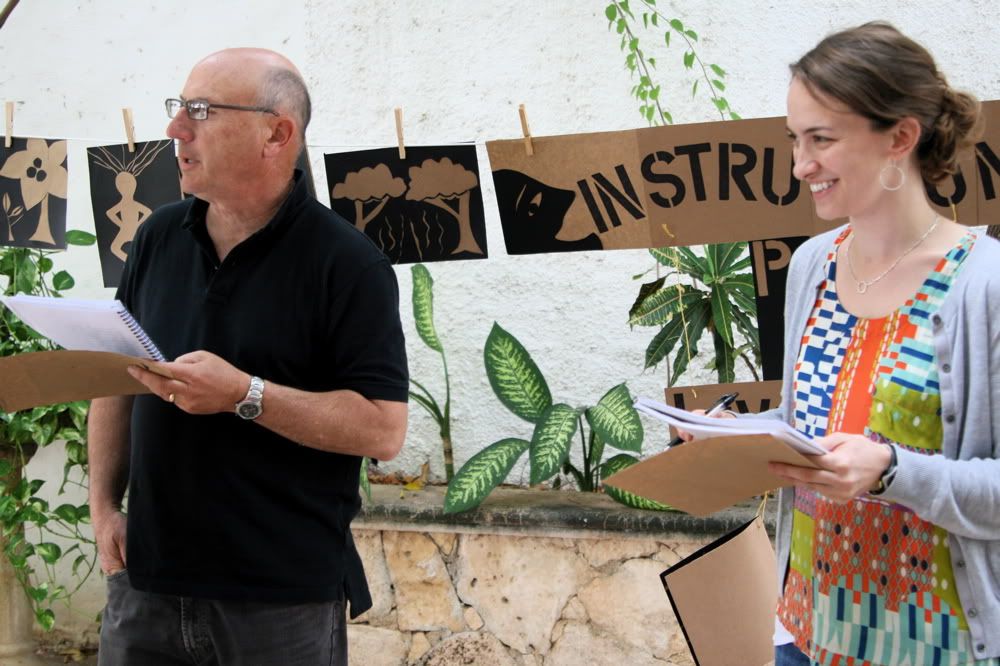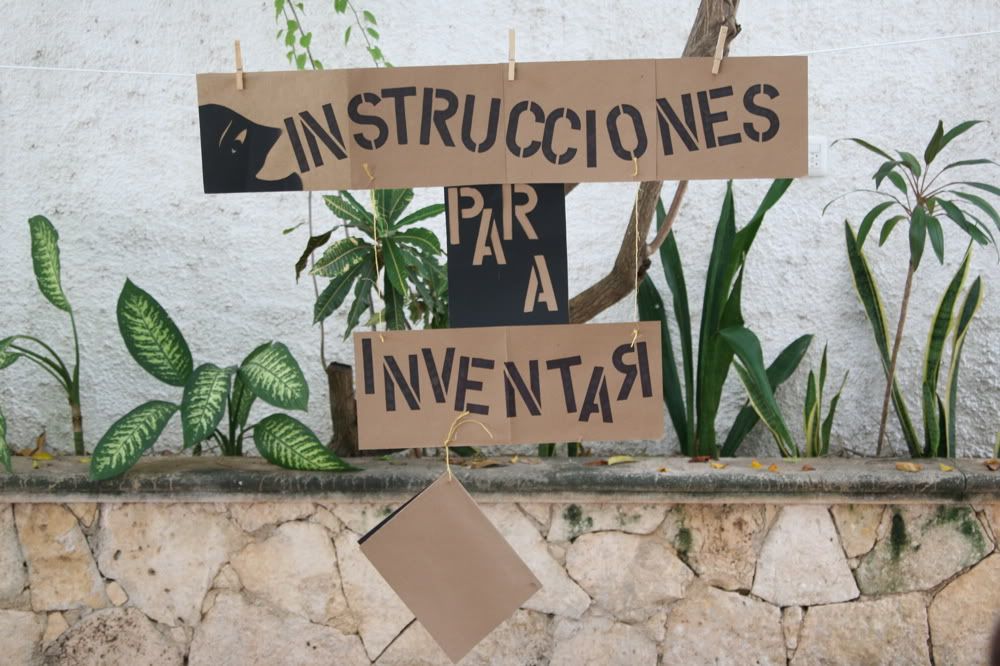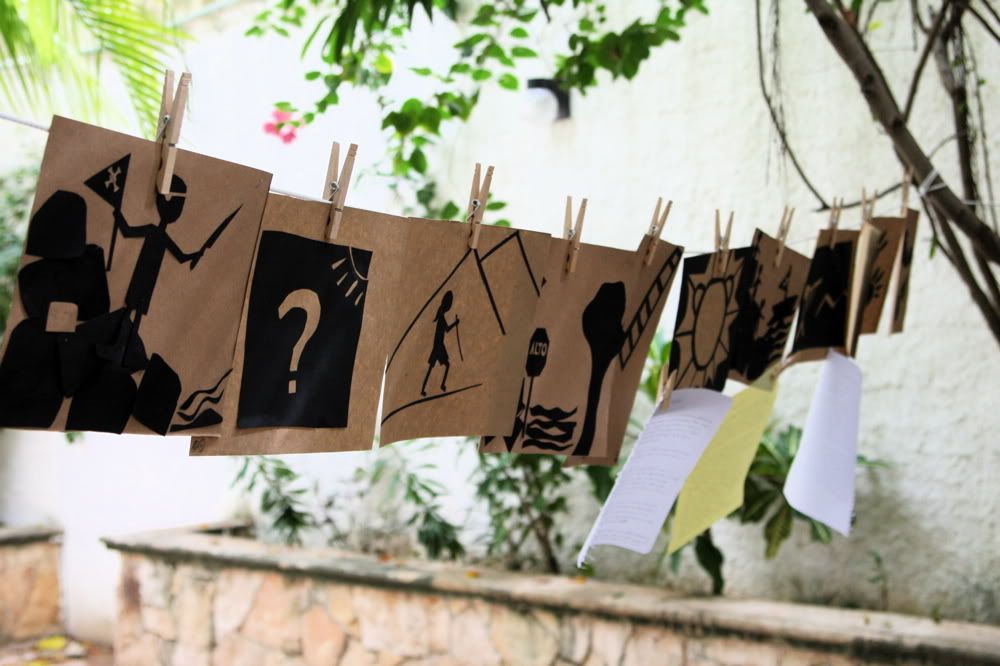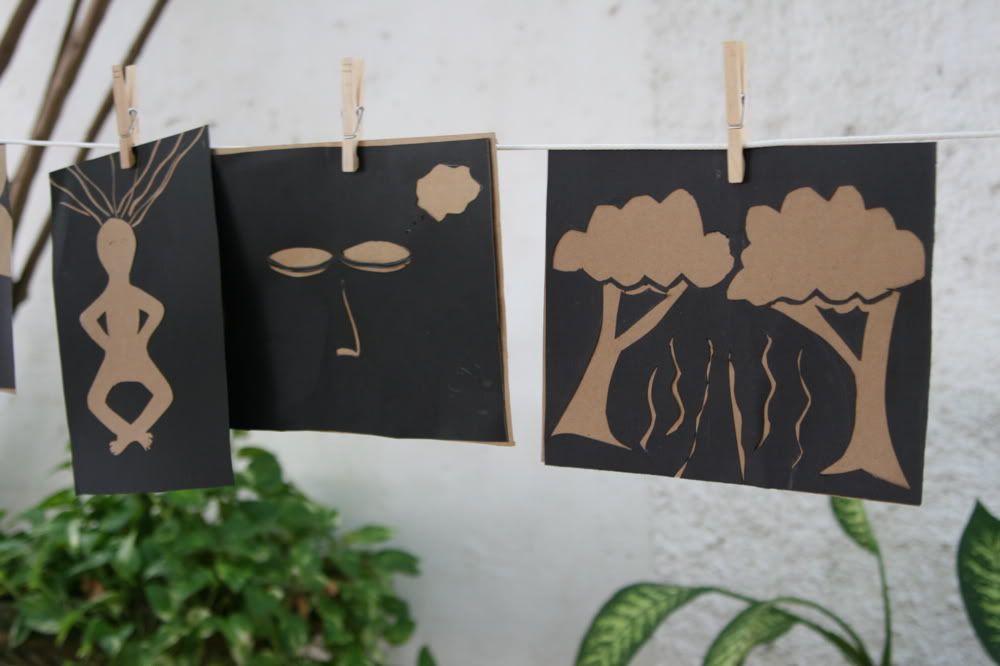
- John Jennings and Jessica May describe their imaginary worlds.
A school holds great possibility for breaking from the routines of daily life. In an age of standardized testing in our public schools, this statement might seem to contradict reality, but this has been my experience as a teacher, even in the most institutional environments. Classrooms are still spaces where teachers and students come together for a period of time and engage in a journey very different from the ordinary day-to-day activities we often must accomplish. I might wake up in the morning, take a shower, eat breakfast, rush off to work, answer emails, take care of finances, run to the grocery store to pick up some food and continue with my typical daily routine, but when I step into the classroom all that is left behind. My students and I are in a space together for ninety minutes or more, and during that time we are in a place where we don't have to rush, a place where we can put the worries of the outside world aside, read a work of literature, and share our thoughts and feelings with each other. As an educator, I believe this is and always has been one of the great privileges of teaching: to have a sanctuary, a place to step out of the routines of daily life and reflect on how to live in this world.
Literature and the arts are some of our greatest tools for fostering deep reflection. Philosopher and arts educator Maxine Greene describes how the arts provide a space to imagine what might be possible. Greene explains that the job of the teacher "is to devise situations in which the young will move from the habitual and the ordinary and undertake a search." For Greene this search centrally involves imagination "as the felt possibility of looking beyond the boundary where the backyard ends or the road narrows, diminishing out of sight."
One of our teachers at Habla, Viviana teaches a beautiful series of classes in which she helps her students look "beyond the boundary where the backyard ends." Children's literature is filled with examples of journeying beyond the boundaries from the Pevensie children discovering the magical wardrobe in The Chronicles of Narnia to Harry Potter's Hogwarts Express, the train that whisks us to the world of the wizards. Viviana explained to me, "We all have imaginary places we like to go to, even when we are adults. When we were kids we had hideouts. We built houses with sheets inside or forts with branches and limbs outside." She continued, "We can use words as materials to build our own imaginary places."
Viviana was teaching a group of adults who were visiting Habla from different places in the world to take Habla's Spanish Immersion course. In her class, she was focusing on the grammatical concept of "mandatos," the command form of verbs, like ¡Damélo! (Give it to me!) or ¡Ven aquí! (Come here!). Teaching command forms of verbs initially seems like the most unlikely moment to enter an imaginary world. Most language classes ask students to write and then give each other orders (Stand up! Walk to the blackboard! Pick up the pen!). Vivi instead asked her students to read a poem, "Cómo despeinar a un lápiz," (How to mess up the hair of a pencil), written by a local Yucatecan poet, Alicia L. Franco. The poem includes a series of commands, such as
Borra más mucho más, ahora retira el lápiz del papel y observa la gran cantidad de cabello que ha desperdiciar.
Erase more much more, now lift the pencil from the paper and observe the great amount of hair that has been wasted.
After discussing the poem, Viviana explained to the group that they should build an imaginary place in their minds. "It can be anywhere: in a forest, a castle, a cloud," she encouraged. Most teachers might stop here, ask the students to describe their imaginary place, perhaps draw it, but this is the point in our pedagogical tale with a twist. Viviana asks the class to "devise a set of imaginary instructions for how to travel to or how to build your imaginary place and these instructions need to use the command form of the verb."
One student took the following notes of all the students' instructions (click to enlarge).
Using their instructions as inspiration, the students then created a cordel of images based on their instructions, an installation we displayed in our school's garden, "where the backyard ends." When we enter the school, we take a moment to look at these images and feel that it might be possible to enter another world, if only we follow the instructions.
Instructions for Inventing

1. Enter into the obscurity of your garden. 2. Close your eyes and leave the regular world behind. 3. Permit your mind to dream.
4. Plant many seeds immediately in your imagination. 5. Listen to the sound of great rivers and waterfalls in solitude without civilization. 6. Create savage animals that you have visited in books and zoos. 7. Imagine that your are an explorer, and employee of the train company, and that you go to mysterious places.

8. Believe that your cat is a lion and your dogs are wolves. 9. Point your compass East, and with your dog, walk. 10. Your imagination is in charge, go wherever you want.

